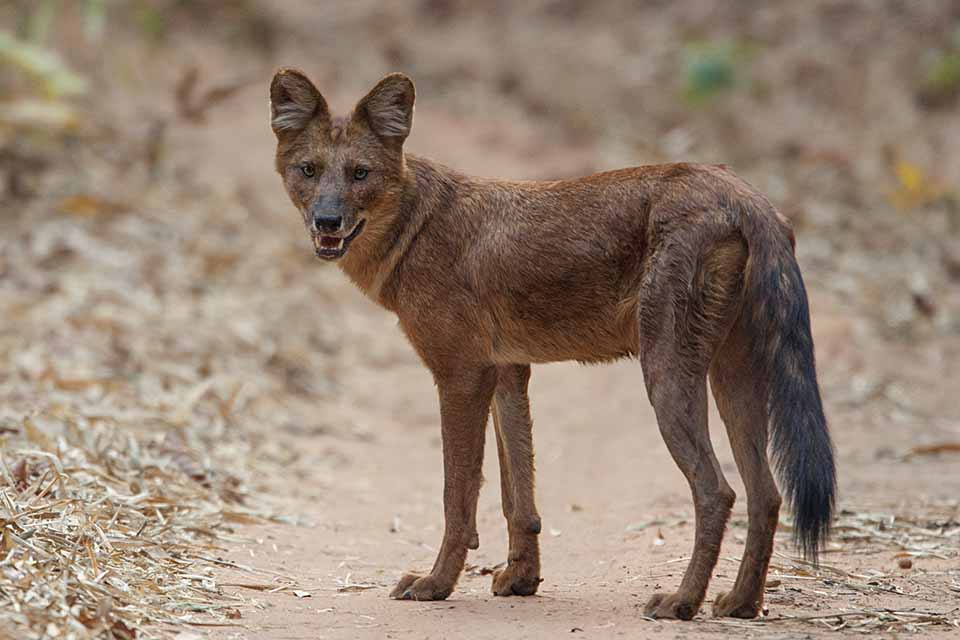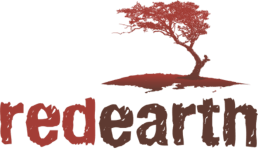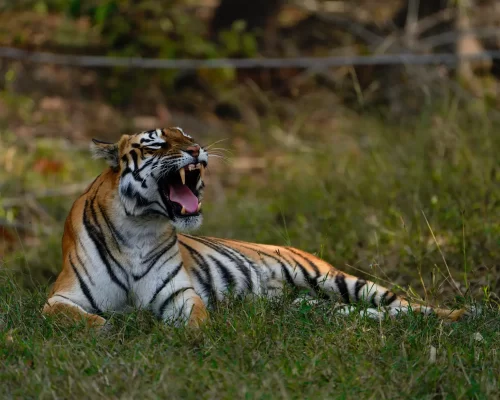The dhole is commonly known as the Asiatic wild dog or red dog or whistling dog and is the size of a German shepherd, although it looks more like long-legged foxes. This highly elusive and skilled jumper is classified with wolves, coyotes, jackals and foxes and belongs to the taxonomic family Canidae. Dhole wild dogs are one of the top predators of India, which are found in the Central Indian Highlands and the Western Ghats, as well as the Eastern Ghats. Dhole is a very social animal which is on the endangered list today. There are around 2,500 adults left in the wild forests of India, including Bandhavgarh National Park, Pench National Park, Madumalai National Park, Indravati National Park and Dibru Saikhowa National Park in Assam.
Tadoba Andhari Tiger Project in Chandrapur district of Maharashtra is one of the famous Project Tiger Reserves. This is home to several endangered mammals, including Indian Leopards, sloth bears and wild Dhole Indian dog. Dhole dogs are some of the big animals that can be spotted at Tadoba, also prime natives of Tadoba. The Dhole wild dogs live in packs and populate the park. These are pack hunters that can fight with tigers and leopards for their prey. You can watch these amazing creatures while you stay at our resort in Tadoba.

Image credits: walkthewilderness.net
Dholes are unusual dogs for many reasons. They do not fit into any dog subfamily like the wolf and fox. Dholes have only two molars on each side of their lower jaw, instead of three, and have a relatively shorter jaw, when compared to other dog counterparts. The female dholes have more teats than other canid species and can produce around 12 pups per litter.
The dholes are extremely athletic in nature, fast runners, excellent swimmers, and impressive jumpers. These skills are critical while hunting in packs. They are adapted to survive in various conditions of climates and habitats, including dense forests, scrub, steppes, and alpine regions. In some protected areas, they share habitat space with tigers and leopards. Depending on their habitat, they are of varied colours, from charcoal grey to rust-red to sandy beige. Their tail is bushy and fox-like, with a black tip on most. They usually have a white chest, belly and feet, although it is not found in many.
Adult dholes have a long tail. Rounded ears, the males being larger and heavier than females. They adapt very well to their surroundings, just like the dog species. They usually maintain a vast territory of about 34 sq miles (88 sq km) so that they can find prey to eat. They also hunt as a group, with one lead dog who takes charge. Dholes are very good at communication and use an eerie whistle to communicate with each other. They do use a variety of noises, including clucks, high pitched screams that are not common in canid families. These unusual sounds that the dholes make while hunting helps them to perhaps communicate effectively, allowing them to take down the prey many times their own weight. They can also swallow the meat in large chunks and even carry the leftovers back to the other pack members. Dholes can use their sense of smell to track prey, and sometimes they chase their prey to water to help them slow down. Dholes prey on hoofed mammals, like deer, wild pigs, buffalo, and wild goats. They also eat berries, bugs, lizards, and rabbits. Each pack usually has 5 to 12 members, although they also work and play with dholes of other packs too. Dhole packs live in burrows with multiple entrances.

Image credits: medium.com
Dholes are highly sociable and cooperative and suffer significantly from habitat loss and fragmentation, as they lose places to live and reproduce. The dholes usually die a slow death when they do not find prey or do not have a place to live. Disease and human conflict threaten Dholes. Hence they are now listed as an endangered species. Their supply of prey is running out in many areas. Dholes can be infected with diseases such as distemper and rabies from domestic dogs brought by humans moving into their habitat. Dholes are trapped and poisoned in some places, their dens destroyed, as they are viewed as dangerous pests.



